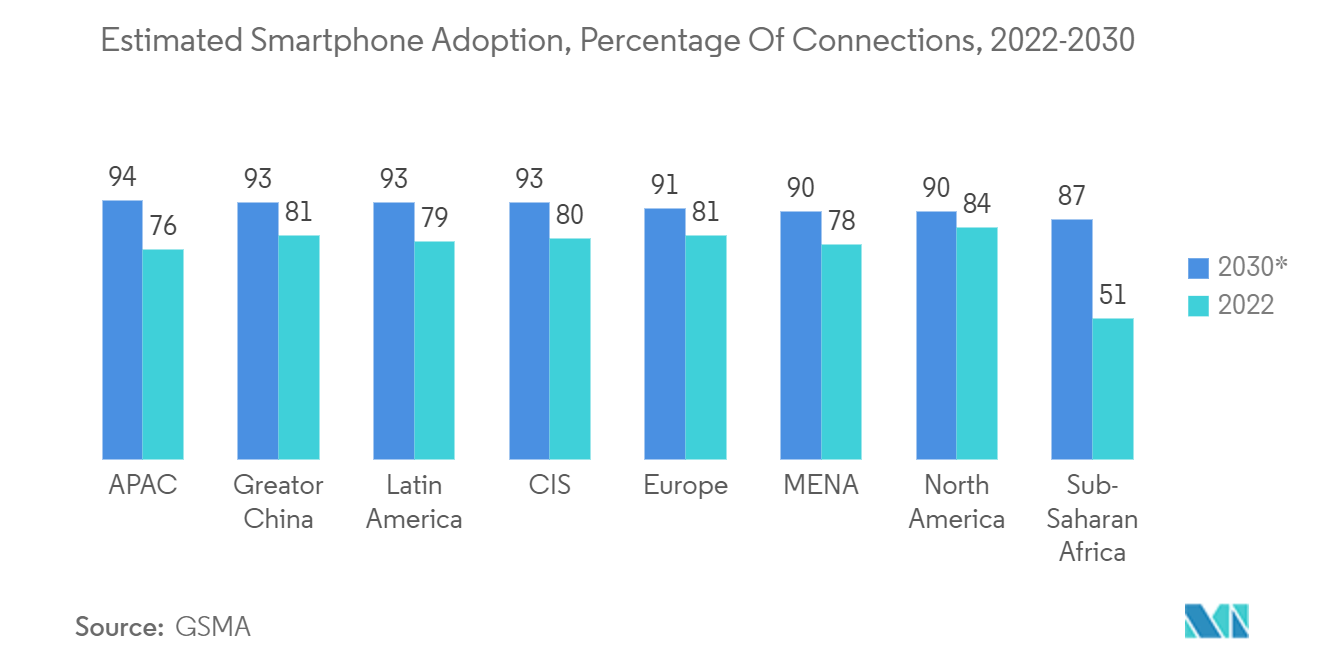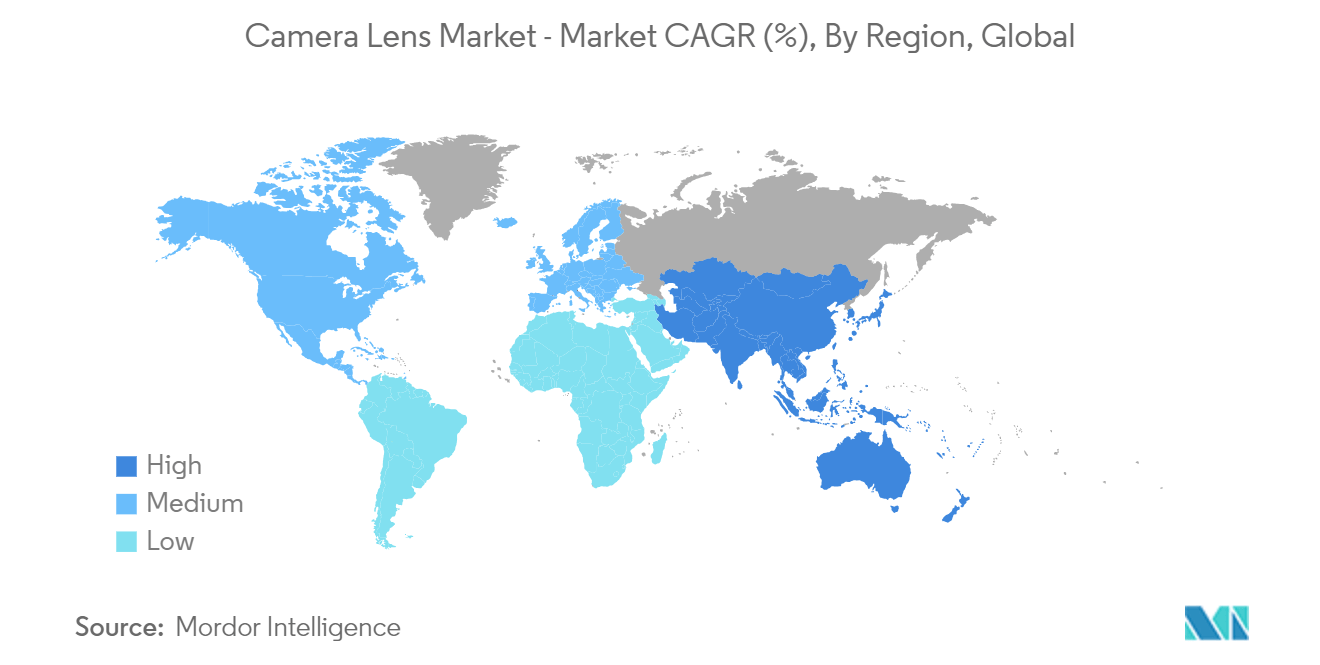Market Trends of Camera Lens Industry
Mobile Consumer Electronics Application Segment is Expected to Hold Significant Market Share
- The camera lens in mobile phones plays a vital role in capturing and directing light onto the camera sensor, which is transformed into an image. It is an essential component that significantly influences the quality and sharpness of the resulting image. Higher-end lenses may produce more precise and more detailed photos. With the increasing popularity of mobile phones, there are anticipated market prospects in this field.
- In the past few years, there has been a notable advancement in phone camera lenses, with specific models now equipped with multiple lenses to cater to various needs. For instance, certain phones are equipped with a wide-angle lens, perfect for capturing breathtaking landscapes or group shots, while others boast a telephoto lens, allowing users to zoom in on distant subjects. Undoubtedly, the phone camera lens plays a pivotal role in our smartphones and has witnessed remarkable progress recently. As technology evolves, we can anticipate further enhancements in phone camera lenses and their exceptional image quality.
- The increasing demand for smartphones and continuous advancements in smartphone technology are the main driving forces behind the rising demand for cell phone camera lenses. According to GSMA, smartphone adoption in Asia-Pacific is expected to increase from 76% in 2022 to 94% in 2030.
- As consumers place more importance on photography and videography features when purchasing, the demand for smartphone camera lenses is projected to grow significantly. Additionally, the growing need for improved image quality, which has become more prominent due to various factors, is expected to fuel advancements in camera lens technology to meet the increasing demands of mobile applications.
- As a result, smartphone cameras are integrating innovative lens technologies to improve the quality and functionality of images. An instance of this is using glass+plastic lens technology, which combines different materials to optimize optical performance. Nowadays, smartphones have multiple camera lenses, each designed for a specific purpose. This lets users explore various photography modes, including wide-angle, telephoto, and macro. The increasing demand for purpose-driven lens technologies is expected to contribute to the market's growth.

Asia-Pacific to Dominate the Market
- Asia-Pacific is a significant hub for smartphone manufacturing, which requires a steady supply of camera lenses. Consumers in the region show a growing preference for smartphones with high-resolution cameras for capturing photos and videos. This demand leads to an increased need for advanced smartphone camera lenses.
- Asia-Pacific has been one of the significant markets for smartphones, primarily due to the highly developing telecom sector and large customer base. According to the National Bureau of Statistics of China, in 2022, the production volume of smartphones in China amounted to almost 1.6 billion units. China was the most prominent smartphone producer worldwide. In 2021 and 2020, smartphone production volume was 1.67 and 1.47 billion units, respectively. According to IBEF, India is one of the leading players in cell phone exports by country. The country aims to produce electronics worth USD 300 billion by FY 2026. Manufacturing smartphones would be the key to achieving India's ambitious goal.
- Growing demand for smartphones and other consumer electronics products from countries such as India, China, the Republic of Korea, and Taiwan encourages many companies to set up factories in the Asia-Pacific countries. For instance, OPPO, a global smart device brand, recently established a manufacturing unit in India for smartphone manufacturing. With its high-tech manufacturing prowess, innovative automation, and state-of-the-art equipment, the Noida factory of OPPO India currently manufactures one smartphone every three seconds. To ensure a seamless supply chain of smartphones to market, the OPPO India mobile factory stocks materials for over 1.2 million phones at any given point.
- The automotive sector in the region also contributes to a significant share of the total demand for camera lenses in the region. For instance, China is the world's largest automotive market, with 23.56 million passenger cars purchased in 2022 (as per OICA). According to IEA, China was the largest market for electric vehicles in 2022, accounting for around 60% of global electric car sales. More than half of the electric cars on roads worldwide are currently in China, and the country has already exceeded its 2025 target for new energy vehicle sales, therefore driving specific product launches.
- In August 2023, Hefei Haitu Microelectronics Co. Ltd completed a Pre-B round of equity financing worth CNY 100 million, which equals about USD 13.75 million. This puts the funding round at about USD 50 million or more. The money will be used for the mass production of image sensors and to increase investment in the R&D of CIS products in the fields of machine vision, automotive electronics, and medical treatment based on novel technology. These investments will further create opportunities for the market studied.

